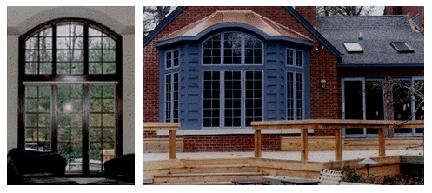California's Title 24 Energy Standards

What are they? How do they affect home construction?
All new homes, additions and alterations built in California are required to meet the Title 24 Building Energy Efficiency Standards.
The Building Energy Standards have been in place since 1978, and have been modified several times. The Standards outline minimum construction requirements, standardize material specifications, and specify the approved computer programs and package methods used in calculating the Energy Report.
By 2011, it is estimated that because of the Standards, the reduced demand for energy will amount to a savings of $43 billion, which would pay for enough energy to power the entire state of Texas for one year.
Homeowners Benefit Most
New home buyers can be assured that their home meets a minimum energy conservation
level due to the requirements of the Building Energy Standards. In a new home,
homeowners can significantly reduce their energy bills compared to older homes.
Improvements in thermostats, windows and insulation products, as required by the
Standards, help create a quieter and more comfortable home.
Homebuilders Benefit Too
Energy efficiency measures improve the marketability of new homes. Marketing surveys
show that buyers prefer homes with lots of windows, but unless the high percentage of
glazing is mitigated by efficiency measures, such as dual glazing or the new vinyl
windows, window area must be reduced in order to comply with the law. All of the
components of the specific Title 24 Energy requirements are useful marketing tools, as
buyers are aware that an energy efficient house will be more comfortable and save on
utility bills. Wise builders know that an energy efficient house helps to avoid homeowner
complaints, and that building according to the report avoids litigation.
Conservation Measures Ensure a Cleaner Environment
The long-term effects of the Building Energy Standards will provide improved air quality
and lessen the state's dependence on foreign oil, while managing California's energy
resources for the future. Responsible and forward-thinking builders are proud to follow or to exceed the Standards, giving them the edge in a competitive
market.
AutoCAD makes it easy No more sticky-backs!
 How long do you currently spend preparing a sheet for the Title 24 energy documentation?
The time spent creating sticky-backs, paste-up and trips to the blueprinters can now be
eliminated by having a CAD sheet prepared ahead of time.
How long do you currently spend preparing a sheet for the Title 24 energy documentation?
The time spent creating sticky-backs, paste-up and trips to the blueprinters can now be
eliminated by having a CAD sheet prepared ahead of time. We will prepare Title 24 energy compliance sheets in AutoCAD DWG format, or DXF format which is supported by most CAD programs.
We can deliver the CAD file to you on disk or transfer the file by modem. If you have any questions on this procedure, just call us.
Pyramid of Efficiency
The Title 24 building standards are not alone in requiring and promoting energy efficiency in California.
 The foundation of efficiency is in the appliance standards. These assure a minimum efficiency of
manufactured devices such as air conditioners, heating equipment, water heaters, refrigerators and freezers,
fluorescent lamp ballasts, air leakage around windows, and pool heaters.
The foundation of efficiency is in the appliance standards. These assure a minimum efficiency of
manufactured devices such as air conditioners, heating equipment, water heaters, refrigerators and freezers,
fluorescent lamp ballasts, air leakage around windows, and pool heaters.
In addition to this, the building standards set minimum mandatory requirements for things such as the amount of insulation and setback thermostats. Once these are met, the building must also be shown to use less than a predetermined amount of energy on a per square foot basis when summed for the whole year. This is what most people think of when referring to the Title 24 energy standards.
There is a lot of room for improvement over what Title 24 requires as a minimum! The utilities each have a myriad of incentive programs designed to promote this extra level of efficiency. For residential buildings, the emphasis is on more efficient air conditioners and better quality glazing. For commercial buildings, lighting efficiency takes the lion’s share of efficiency incentive.
Glazing

Not all dual glazed windows have the same energy performance. A standard dual metal window made five years ago would lose nine times as much energy as the wall, but if it were built to today’s recommended values it would lose only eight times as much. A wood or vinyl frame window would vary, losing only between five and seven times as much as the wall. It is easy to see why a little glazing adds up to a lot of energy use!
The U-value of the window, which rates how much energy it loses, became a very important number as of July 1, 1993. U-value labels are now supposed to be affixed to the glazing installed in the field. These U-values must be less than or equal to the U-values listed in the calcs on the CF-1R. We try to allow flexibility when doing the compliance, but you may choose to have us achieve compliance by using a particular manufacturer with low U-values. If you have a project which switches to a different window manufacturer than what the calcs are based on, make sure the U-values are equal!
The SDG&E incentive program will pay you cash incentives if you choose to upgrade the windows above the minimum Title 24 requirements. Better windows are not only more efficient, but also increase indoor comfort.
If an alteration to a residence is so minor that you do not need to get a building permit, then the windows may be single glazed. Usually, additions and alterations will be dual glazed.
Commercial buildings also have glazing U-value requirements, but these do not have nearly the impact as for residential buildings. Single glazing is still normal in southern California climate zones.
Federal Energy Policy Act and Title 24: Overlapping Codes?
Fortunately, the answer is no. The Title 24 energy code does satisfy the new federal requirements for single family dwellings, according to a decision recently made by the US Department of Housing and Urban Development.
What was happening? The federal Energy Policy Act of 1992 covers a wide range of issues. It includes, among many other things, equipment standards, integrated resource planning for utilities, grants and audits for heavy industry, administration and training to implement the various features of the Act, and it promotes the use of alternative fueled vehicles and the development and export of renewable technologies. It also includes building efficiency standards.
These building efficiency standards require that, as of October 1993, residential buildings which receive HUD financing must meet the Model Energy Code. This code is similar in format to what California had for commercial buildings in 1978.
All low-rise residential buildings will soon be affected. By October of 1994, all states will be required to adopt the Model Energy Code or its equivalent. Commercial buildings will have to meet a standard which has been developed by the American Society of Heating, Refrigerating and Air-Conditioning Engineers (ASHRAE).
In addition to having a commercial code, ASHRAE is on a very fast track to finish developing a residential code. The Model Energy Code was written only to provide a guideline, and it does not cover all situations. ASHRAE’s intent is to create an equivalent, enforceable code which could be directly adopted by individual states. This would reduce duplication and increase consistency across the nation. At least in the short run, however, California will keep its own code.
Enforcing the Standards of the Title 24 Law
California BIA Sponsors Seminars for BuildersEvery three years, California’s Title 24 energy code may be revised. Instead of revising the code on its latest scheduled revision date, January 1, 1995, the CEC decided to emphasize enforcement.
Builders, contractors, superintendents, building officials, architects, designers, plan checkers, and energy consultants can choose from a variety of formal Title 24 seminars and classes presented by the following organizations:
CEC - California Energy CommissionThis spring, the CBIA offers to builders a seminar titled, "Fight Construction Defect Litigation with Training." This seminar is a Title 24 code compliance workshop.
CBIA - California Building Industry Association
CABEC - California Association of Building Energy Consultants
CALBO - California Building Officials
On March 14, in association with the Remodelers and Custom Builders Council of the San Diego BIA, Gallant Energy Consulting is conducting a Title 24 energy code seminar. Critical questions will be addressed such as "What is in store for Title 24?" and "How can an energy consultant help with the legal requirements?" Call Mark Gallant at the Escondido office for more information.
Gallant Energy Consulting also offers informal in-house training seminars to builders and architects at no charge. Call the office nearest your location if you are interested in scheduling a training session for your staff.
Certified and Licensed
Gallant Energy Consulting’s technician, Mark Gallant. Check your reports for your documentation author’s credentials. If your energy consultant is not licensed or certified it is recommended that you have your reports reviewed by a certified energy consultant.
Member of the Building Industry Association
Speciality Contractor's Council and Remodeler's CouncilSeveral studies sponsored by the CEC have shown that at least half of the homes built in California since the Standards were established do not comply with the Title 24 Code.Examples of Errors in Title 24 ReportsSome Title 24 reports were written incorrectly. In other cases, the required energy components were simply not installed. As homebuyers increasingly insist that the energy features in the report are actually installed and documented, the wise builder will follow the report carefully to avoid construction defect litigation.
Builders are required by law to provide the building owner at occupancy the appropriate Certificate(s) of Compliance and a list of the features, materials, components, and mechanical devices installed in the building and instructions on how to operate them efficiently. Energy Efficiency Standards, Section 10-103.
1. Glazing areas and U-values miscalculated.Examples of Errors in Field Construction
2. Eaves, rakes and overhangs exaggerated.
3. Garage doors omitted.
4. Insulation values and slab-edge U-values incorrect.
5. Inaccurate mechanical equipment sizing.
6. Shading coefficients incorrect.
7. Climate zone incorrect.
8. Floors over unconditioned space omitted.
9. Ductwork location on plans and report not in agreement.
10. Doors with glass modeled as solid wood.
11. Zonal control credit improperly modeled.
12. Vaulted ceilings modeled as attics.
1. External water heater blanket not installed per report.
2. Roller shades not installed per report.
3. FAU efficiencies less than indicated in report.
4. Air conditioner efficiencies less than indicated in report.
5. Water heater efficiencies less than indicated in report.
6. Insulation values less than indicated in report.
7. Thermal mass areas less than indicated in report.
